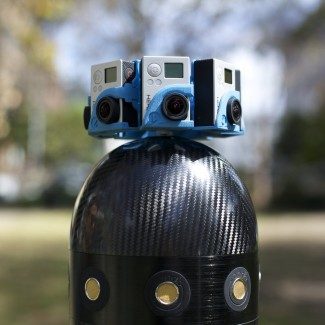Les Borsai from Dysonics, specialists in spatial audio, ponders whether spatial, 3D audio’s time has finally come with the advent of consumer ready virtual reality and what more needs to be done to keep it evolving.
Les Borsai is VP of Business Development at Dysonics, a leader in VR audio capture, creation, and playback solutions. Previously, he held executive positions at Avalon Attractions (now Live Nation) and later at Bill Silva Management and his own Modern Artist Management.
It’s no secret that audio has been the red-headed stepchild of the VR industry. That video has been the child hogging all the attention is obvious to even casual observers. True immersion engages all senses, not just the visual. Industry professionals serious about true VR integration need to step up their audio game. Consumers deserve the full experience. Anything less is a glorified tech-demo posing as the greatest revolution in entertainment and the enterprise since the introduction of color film.
We are not the only ones who have been advocating for audio. Forbes and Engadget have raised their voices in the past several weeks, highlighting VR audio offerings at CES and other high profile events. Wired has also weighed in, explaining why spatial audio is such a big deal for Google Cardboard.
We applaud the mainstream tech press joining a wave that Road to VR and others in the VR specialist media have known for quite some time. But we wonder what else can be done to move VR audio technology forward in a real and tangible way.
Several suggestions come to mind:
1) Better VR audio capture
Immersion starts with being able to grasp the truest representation of the experience. Imagine the revenue possibilities for concerts and other live environments.

This is not a specialized technology for sound connoisseurs. This is technology for everyone who wants to experience sound as a vital, living thing. We’re talking a device that captures true spherical audio, for pristine reproduction over headphones. You’ll hear sounds change relative to your head movement— from left to right, up to down, and near to far—exactly as you’d hear them if you were there live. This interactive audio element becomes a game-changer for live-captured immersive content, adding a critical layer of contextual awareness and realism.
The incorporation of motion restores the natural dynamics of sound, giving your brain a crystal-clear context map that helps you pinpoint and interact with sound sources all around you. These positional audio cues that lock onto the visuals are vital in extending the overall virtual illusion and result in hauntingly lifelike and compelling VR content.
2) Better VR audio editing tools
We need good VR audio tools. Tools that are powerful, yet easy-to-use: What Photoshop was to digital images, what Final Cut Pro was digital video. Content creators need a streamlined stack that will take them from raw capture to finished product. This is the only way we’re going to get content that’s more compelling and fully interactive.
Most content creators just don’t have the skill set or time to focus on audio. That’s why the company that wins in this space needs to craft a solution that is modular and easy-to-use. The complete stack would look something like: An 8-channel spherical capture solution for VR, plus post-processing tools that allow content creators to pull apart original audio, placing sounds around a virtual space with customizable 3D spatialization and motion-tracking control.

3) Better VR audio for games
Gaming and VR are two juggernaut markets that will see enormous overlap in 2016. Big advancements in VR audio will come with the creation of plugins for the major gaming engines (Unity or Unreal, for example), giving developers the power to deliver immersive audio to the next generation of VR games.
Audio-realism is critical to gaming. Imagine playing a VR shooter and hearing an enemy helicopter behind you, overhead in the distance. You look up and to the right to the right to find the sound becoming more and more centralized (just as it would in real life), allowing you to quickly pinpoint the helicopter’s location. You take cover as bullets whiz by you left and right in amazing surround-sound detail.
Even the most subtle of audio cues (gained from the incorporation of motion and lifelike spatialization) allow you to interact with sound sources all around you. So by activating arguably our most important sense, overall immersion goes up considerably, as does natural reaction time.
The Opportunity
In a recent whitepaper Deloitte predicts that VR is poised to have its first billion-dollar year. Growth will be attributed to use across multiple applications, with gaming providing a core activity driven by tens of millions. The numeric breakdown is $750 million in hardware sales; the remainder in content.
This is no minor milestone. It’s time for VR audio to shine.








